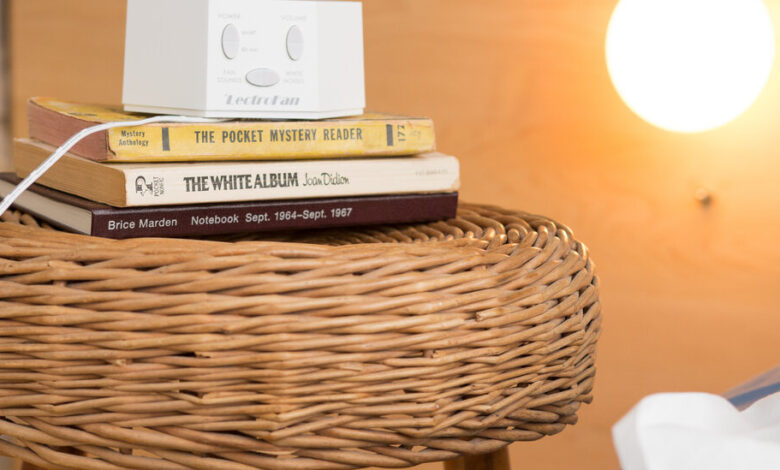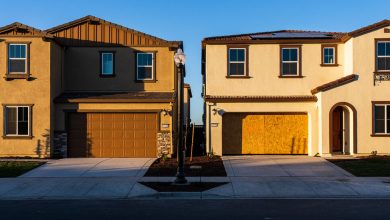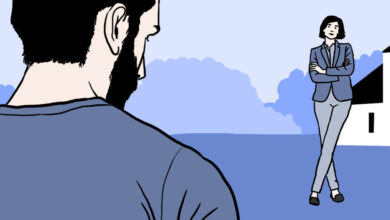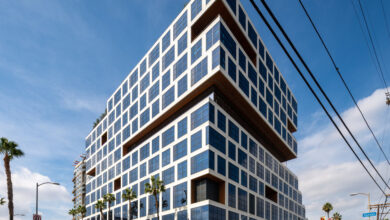How to Block Out the Sounds of Summer

[ad_1]
Slowly but surely, my corner of New York City is coming alive again. New neighbors will be moving into the long-vacant apartment across the hall, and from the sound of it, they’re giving it a real face-lift. The building’s sidewalk replacement project, long delayed, is back in action. People are having rooftop parties on my block again — or maybe it just sounds like it’s on my block.
I tried a hodgepodge of noise-fighting devices — white-noise machines, ear plugs, noise-canceling headphones — but nothing seemed to work. So I turned to audio experts and my colleagues at Wirecutter, where I’m a senior staff writer. It turns out, I’d been using these devices all wrong. Successfully managing everyday city noise requires a balance of physics and psychology — part of what makes noise annoying is our lack of power over it. Here’s how to optimize your noise-fighting devices and take control of common noise problems.
Construction Work
For extremely loud noises like building or street construction, you want to start by lowering the decibels. When jackhammers and electric saws make your ears hurt, feel full or ring, then the noise is too loud and could be damaging your hearing. Start by getting a pair of good-quality foam ear plugs, which can lower the intensity of noise entering your ears by as much as 15 to 30 decibels. Mack’s Slim Fit Soft Foam Earplugs (about $10 for 50 pairs) were the top performers in most of Wirecutter’s objective measurement tests, and they had the most fans on our four-person test panel. If you can’t get a snug fit with Mack’s — crucial with any earplug — Wirecutter also recommends 3M’s E-A-Rsoft OCS1135 for people with wider ear canals.
Earplugs will take care of safety, but even at lower volumes, noises can be annoying. Add a second layer of defense with white noise, either from an app or a dedicated machine. For very loud noises like construction, you can combine both ear protection and masking noise “so you don’t need to crank the sound up to painful levels for it to work,” said Stéphane Pigeon, an audio engineer and the developer of Wirecutter’s favorite white-noise app, myNoise.
Mr. Pigeon suggested protective headsets that fit over the ears and connect to your streaming or white-noise device. Nonconnecting headsets worn over wireless earbuds are also very effective “for the truly desperate,” said Wirecutter senior staff writer and headphones reviewer Lauren Dragan.
Typically, the most effective masking option is one that’s a close match to the sound curve of your nuisance noise but sounds more pleasant in your mind (rain on a tarp, for instance, to diffuse incessant hammering). However, loud apartment renovations — with a mix of high frequencies (drills) and low frequencies (jackhammers) that start and stop abruptly — can be tough to mask effectively. Counterintuitively, Mr. Pigeon recommends fighting such “bad” construction noise with “good” construction noise (his version of designed cacophony is available when you search “Demolition Site” on myNoise.net; on the app, it’s $1). It sounds bizarre, but when I tried it, the gentler, more rhythmic bulldozing and jackhammering blended away the jagged edges of the real-life noises just enough to keep me sane.
Generators and Air-Conditioners
The humming of your window air-conditioner unit may be a constant companion this warm-weather season, and its predictable, low-frequency whirs and rumbles are exactly what noise-canceling headphones are best at tackling. Dan Gauger, an engineer in applied research at Bose, explained that noise-canceling technology creates sound waves in the same frequencies and amplitudes — but opposite phase — of a low-pitch nuisance, so the sound essentially cancels out. Those sound waves don’t line up with high-frequency noises (such as car alarms or a crying baby), so don’t try using your headphones to block those.
Wirecutter recommends Bose’s Noise Cancelling Headphones 700 (about $380). Though a bit pricey, they offer Bose’s top-notch noise cancellation on an adjustable scale from zero to 10, plus plenty of comfort.
Bars and Parties
Properly inserted ear plugs will dampen high-pitched noise best, Mr. Gauger said, but often the problem is a mix of frequencies, which means you’ll want to dampen volume and mask it with the sounds you want to listen to. Noise-canceling headphones can tame the thump of low-frequency bass, and you can add pink noise or rainfall sounds from a whit-noise app or machine to effectively soften loud chatter or the shouts of rowdy guests.
If you’re trying to sleep in the headphones, though, you will have to sleep on your back. For those who won’t miss the noise-canceling aspect, Wirecutter has found sleep headphones, like the headband-style, wireless AcousticSheep SleepPhones (about $100), that may be more comfortable for side and stomach sleepers.
Things That Go Bump in the Night
White-noise machines are the most suitable solution for the jarring, high-frequency sounds that grate on your nerves — a leaky shower, the yapping of small dogs, or the high-pitched screams of small children. Instead of setting your white-noise machine on the night stand next to you, you’re better off placing it three to six feet away from you, between you and the source of the noise.
Sam Nicolino, the engineer who developed the white-noise machines LectroFan EVO and Sound+Sleep, said that the gentle rhythms of the white-noise machine should fill the room rather than sit in a corner.
The LectroFan EVO (about $45), Wirecutter’s pick for the best all-around white-noise machine, masks a wider variety of noises than the other machines we tested in its price range. Otherwise, the classic, no-frills Yogasleep Dohm (about $45) is a reliable choice if you feel soothed by fan noises. (Yogasleep, formerly Marpac, bills it as the “original white noise machine.”) The Dohm generates its sounds from an actual fan, which gives it a comforting analog quality, but it’s also more limited in its masking capabilities compared with its electronic counterparts.
For louder noises, like clanking radiators, you may need to listen to your masking noise via earbuds (just pull up a white noise app like myNoise on your phone). While not as effective as ear plugs at blocking out noise, earbuds are still able to lower the volume by plugging up your ear, while also directing the sweet sound of relief into your ear. The Bose Sleepbuds II (about $250) were the only sleep headphones Wirecutter tested that effectively masked noise, and their small size makes them comfortable for side-sleepers. However, they’re limited to the white-noise options provided by Bose, and unlike the company’s other headsets, they don’t actively cancel noise.
Interested in learning more about the best things to buy and how to use them? Visit Wirecutter, where you can read the latest reviews and find daily deals.
[ad_2]
Source link






